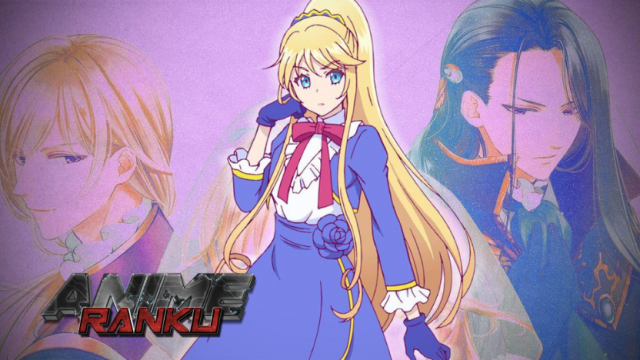I’m the Villainess, So I’m Taming the Final Boss is an Otome Isekai title from the Fall 2022 anime season, and by this point, it’s obvious that the Villainess anime does some things better than others. This anime is passably entertaining as another “girl gets reborn as the video game villainess” storyline, but it never fully deconstructed the villainess Isekai idea.
I’m the Villainess only points out the flaws or silliness of the villainess concept without doing much about it, so it falls short of deconstruction. Then again, protagonist Aileen d’Autriche succeeds where the overall anime fails, tearing apart the very idea of villainy and dishonesty in favor of noble virtues such as honesty, trust, cooperation, and altruism. She’s not a villainess at all, even in appearance, let alone in her methods.
What Aileen Did to Deconstruct Evil in “I’m the Villainess”

At a glance, it’s obvious that protagonist Aileen d’Autriche subverted her original otome game character and became someone nicer and more sympathetic. Few anime, even the grittiest seinen series, star a truly evil protagonist, though Overlord is inching its way toward being one of the exceptions. Anime fans intuitively know that despite being reborn as a game villainess, Aileen will reinvent herself and become someone “good” to distance herself from her original character, similar to Katarina Claes in My Next Life as a Villainess. However, Aileen goes further than that. She doesn’t just avoid any evildoing on her part — she aggressively punishes anyone else who attempts villainy, too.
Aileen bonded with the kuudere demon king Claude in order to achieve her survival goal and acquire plot armor, and only once did she act in a mildly evil manner, such as providing spiked cookies as snacks. Aileen has, aside from that, being a pure, virtuous maiden who relies on faith, honesty, friendship, and love to obtain what she wants for both herself and others. Regardless of the original role of her character, Aileen set a wonderful example for others as a noble protagonist, and she even more so projects those heroic qualities. Aileen opposes everyone else’s evil plans and ensures that nobody else can be harmed. She especially works to protect Lilia Rainworth, Prince Cedric, and Selena Gilbert. Aileen is both the protagonist of an anime and a genuinely good person.
Evil deeds of dishonesty and selfishness are supposed to succeed in this otome game world through techniques like emotional manipulation, demon incense, forged letters, and other similar techniques. The majority of the other characters try to commit evil deeds in Aileen’s place because she refrained from being the evil villainess. This implies that regardless of noble birth or outward personality, anyone is capable of doing wrong. Aileen will put an end to everyone else’s villainy in addition to her own, and not just for the sake of her own survival.
Aileen continued to work toward strengthening her relationship with Claude even after she reached her goal and acquired her plot armor because she found it enjoyable. Along with defending herself, she opposes bad guys like Elephas Levi and Lilia Rainworth because it’s the right thing to do. As a matter of course, Aileen will oppose bad behavior and bullying because she genuinely despises them. A direct challenge to Lilia is posed by the way Aileen dismantles the notion of using devious tactics to succeed in this world.
Aileen disagrees with Lilia’s desire to manipulate and torment everyone because they are video game characters because she feels justified in doing so as another Isekai visitor. Whether Aileen is right or wrong about that, she will obstinately fight for that cause because she sees Claude and the others as real people with real feelings that they should be protected. This has nothing to do with Aileen’s plot armor or ability to survive; instead, it’s just Aileen being the genuine, good person that she is, further separating herself from villainy.
What Antiheroes Did to Deconstruct Evil in Other Anime

From Captain America to Luke Skywalker, all fictional heroes—including Naruto Uzumaki—oppose evil out of moral principles. It means a lot more, though, if the protagonist reinvents the villain as an antihero. Aileen started out as an antihero—a rebellious bad girl who changed the rules of the game to ensure her survival—but she quickly evolved into much more than a selfish schemer in search of dramatic cover. Other anime antiheroes experienced the same thing. They had the option of doing bad things, but they understood the true nature of good and evil and knew that the only option was good.
One prominent example is the vengeful antihero Thorfinn Karlsefni, a happy young man who spent his entire life seeking retribution against Askeladd, no matter who he had to harm in the process. By that point, Thorfinn had crossed the line into evil, but he atoned for his sins and learned the futility and horror of violence. Thorfinn learned a hard lesson about war and evil; as a result, he gave up his propensity for war, opposed violence, and established the peaceful colony of Vinland. Thorfinn did this by dissecting the cool medieval action sequences that the Vinland Saga was “supposed” to extol.
Another example is Guts the mercenary from Berserk, who also came dangerously close to losing control of his anger and hatred while thinking only of the treacherous Griffith. Guts believed that using violence would make his problems go away, and he related to it. After finding a new group of adventurers to call his “found family,” he realized that having those friends gave his life meaning. As a result, he changed his focus from defeating Griffith to protecting his group, or at least that was his immediate objective. Guts still want Griffith dead, but he has learned, like Thorfinn and Aileen, that true love and friendship are always more rewarding than evil or antihero aggression.















Leave a Reply